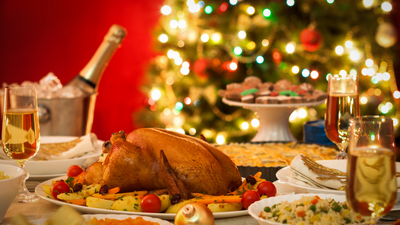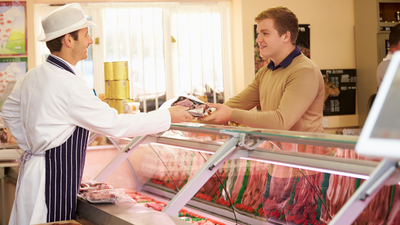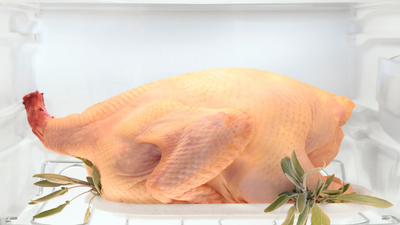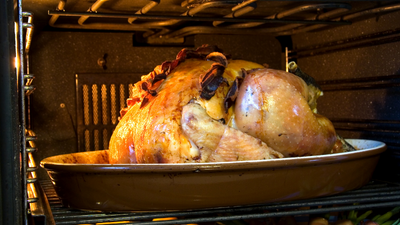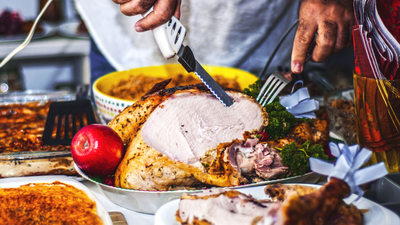Food Hygiene at Christmas
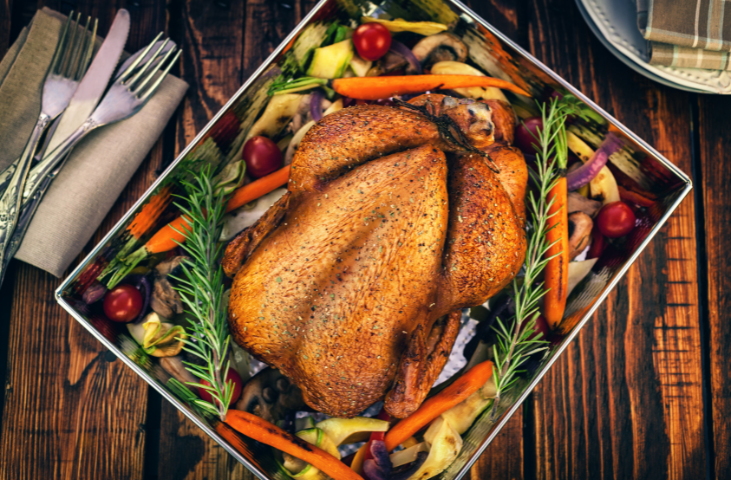
Estimated reading time: 7 minutes
Food Hygiene at Christmas
Turkeys are tricky. The centrepiece of most household’s Christmas dinner is far more difficult to get right than many people realise. There are similar difficulties if you are at a hospitality venue during the Christmas season.
Every year, the person or venue cooking the Christmas dinner can look up the best method to preparing the turkey or use the method that was passed on to them. But often these instructions focus on making the turkey taste the best. What many people can miss is how susceptible the holiday bird is to hygiene slips. Food Hygiene at Christmas doesn’t stop with just cleaning all your vegetables – it begins at the moment you buy the turkey and can end long after it’s been eaten.
Whether you are a chef or a novice cook, it is important to consider the 4 C’s of food hygiene – Cleaning, Cooking, Separating and Chilling – to avoid cross-contamination especially when we are doing a lot of cooking (or cooking for a lot of people) around the holiday period.
The 4 C’s are summarized here:
- Clean – Wash, wash, wash! Including washing your hands, worktops and utensils thoroughly. Clean up spillages as you go and keep your work surfaces tidy.
- Cook – Cooking foods to the correct temperature kills dangerous bacteria. Check this by inserting a cooking thermometer into the meat if you are unsure.
- Separate – Keep raw foods away from ready-to-use and cooked foods to avoid cross contamination and use different chopping boards for different food groups. Store meat on the bottom shelf and if you have frozen meat put it in your freezer until you are ready to defrost and cook it.
- Chill – Always keep cold foods refrigerated. Throw away food that has been sitting at room temperature for more than two hours.
If you are a restaurant check out our blog regarding the 4 C’s and restaurant food safety.
Official guidance from the FSA says that hygiene consideration should be taken from when you shop – making sure to keep raw and ready-to-eat food apart in separate bags. The FSA also have published this article which outlines the steps you should take to avoid the chances of food poisoning at Christmas.
Here, we’ll take you through the best hygiene practice for turkey, from storing all the way to your leftovers.
Storing the turkey
Once you’ve bought your bird (no matter if it’s from the butchers or a supermarket) you must ensure you’re storing it correctly from the moment it arrives wherever you’ll be storing it.
- If you’re storing it in the fridge, make sure the appliance is set at 5°C or below. Any warmer and it may not last up to the marked use-by date.
- If you’re storing the turkey in the freezer, check the guidance on the packaging or with the butcher. There are turkeys that can be cooked from frozen, so make sure you know if that applies to yours. Otherwise, your turkey will need to be defrosted – and this process can take anywhere between three and five days.
Defrosting the turkey
Food safety bodies agree: any turkeys that need to be defrosted before cooking should not be defrosted at room temperature. This should be done in the fridge. Here’s some considerations to know about turkey defrosting.
- Avoiding cross contamination is hugely important. This is because turkey contains bacteria that causes salmonella. Defrost your turkey in a container or tray that’s big enough to contain any liquid that comes out during thawing. Use a covered dish at the bottom of the fridge so that it cannot drip onto other foods.
- Consider the size of your turkey. One that weighs around 7kg can take around four days to fully defrost in the fridge. Don’t know how long yours will take by guidance? The widely accepted calculation for defrosting is 10-12 hours per kilogram.
- Make sure your turkey is fully defrosted. If it’s not, it will cook unevenly, and harmful bacteria may survive the cooking process. The gift of food poisoning is not one you want to give this Christmas.
The FSA have also stated that customers should check whether chilled turkeys have been marked as ‘defrosted’ before purchasing. If they have, then it’s likely they won’t be able to be refrozen.
Cooking the turkey
When cooking a turkey, you should always go by the retailer’s instructions on the packaging. If there aren’t any, the general rule to know is that you should cook a turkey for 35 – 40 minutes per kilogram.
A common practice when cooking turkey is to stuff it. While this improves the flavour, it also means that the whole process gets a little more complicated. Because the stuffing is in the centre of the bird, it is slowest to cook. It’s vital that you check the stuffing itself is piping hot all the way through.
When you think your turkey is cooked, the best way to check it is to use a meat thermometer. You’ll know it’s ready when the internal temperature of the thickest part of the thigh reaches 75°C. On top of the thermometer, here’s what else to look out for:
- When cut into, the juices run clear
- There is no pink meat left anywhere
- The centre of the stuffing is piping hot
If you’re not sure how long your turkey will need in the oven based on its weight, you can use SafeFood’s cooking calculator.
Also, remember not to rush to carve a turkey. Let it stand for at least 20 minutes (or more depending on how big it is) before you carve it up ready for eating.
Food Hygiene for Christmas Leftovers
It’s important to know the guidance for food hygiene at Christmas – and this includes after the food has been eaten. Whatever of your turkey has not been eaten can be re-fridged. The best method is to cut up the meat into small pieces so it cools as quickly as possible. Then place the remaining turkey back in the fridge within two hours of cooking.
The leftovers should be eaten within three days.
Freezing is much of the same, though you will have to make sure the meat is stored in a container that’s suitable for the freezer. Cooked meat will not last in the freezer for more than 6 months.
When you come around to re-heating the meat, you must make sure the turkey it is piping hot all the way through. Plenty of bacteria will have gathered on it that needs to be wiped out by high heat throughout.
Food Hygiene at Christmas – Gaining knowledge
If you need something to ensure you’re doing everything right, you can use this handy checklist to make sure you’ve covered all bases. The best way to go into Christmas, however, is to have the knowledge at hand yourself.
We have a range of food hygiene courses for catering, manufacturing, retail, and home businesses.
Our friendly customer support team is always happy to talk through your food hygiene training options. Why not give us a call on 01327 552136, email us at hello@smarthorizons.co.uk, or use the live chat feature on this website to speak to us during office hours.
Related Links

